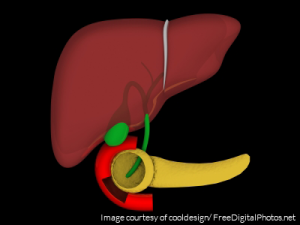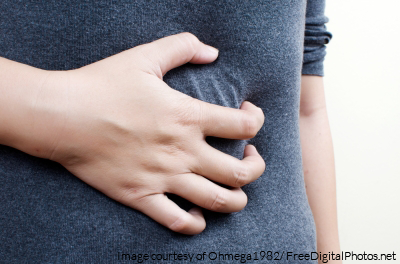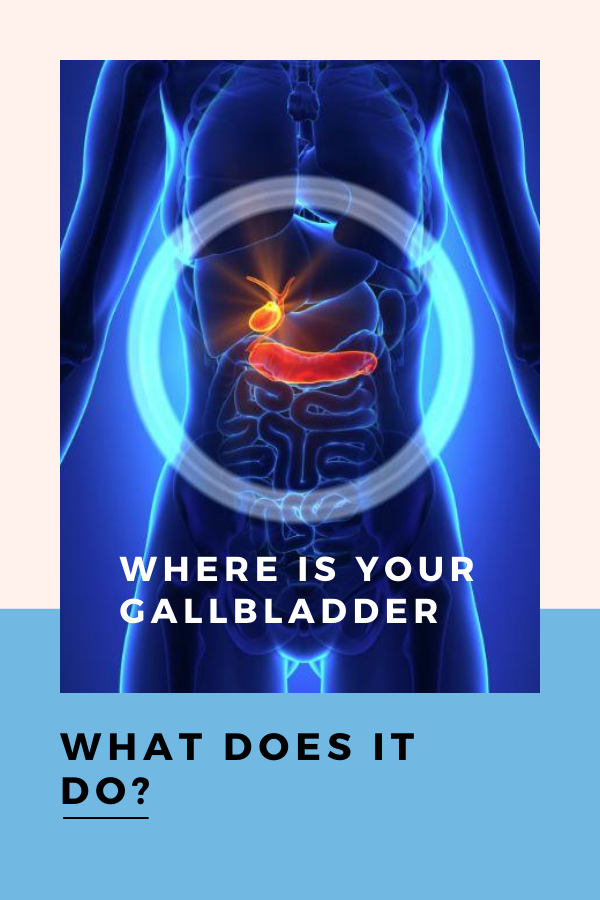Like every one you know you have a gallbladder and probably you know someone who has one removed, but most likely you do not have any idea where it is located and about its function.
Let us fill in these blanks.
You know:
Heart is located on the left side inside the chest – Check
Brain is located in the cranium of the head – Check
But, do you know where your gallbladder is? Hmmm…no idea.
Well, our gallbladder is one of those organs that most of us do not think much about till something goes wrong with it.
When your gallbladder starts to hurts (commonly known as gallbladder pain), you know right away where is it located. And you never forget its location thereafter.
Facts about Your (Female) Gallbladder
- An estimated 20 million American suffer from some kind of gallbladder disease –majority of them are females
- Humans can live without gallbladder, and approximately 500,000 Americans have this organ removed surgically each year
- Gallbladder attacks occur in females 3-4 times as often as in men and it can be highly painful
- Cholecystectomy (the medical term used for having the gallbladder surgically removed) is one of the commonly done operations on women
These numbers warn females that they must more interest in this 4-5 inch long pear-shaped organ. Gallbladder that appears like a baby eggplant helps keep digestion working and our liver working and it can create pain and problems if it is not in a good shape.
So where is this cute little sac (I look at it as a cloth bag without the ruffles of a tie) is located and what it does? Why it creates such problems that many females willingly go under the knife to remove it?
Where is Your Gallbladder Located ?
The gallbladder is located in the upper right quadrant of the abdomen just below the liver and rib cage. If there are any problems, usually people complain of pain I the area- right below the ribs.
It is a pear-shaped sac sitting on the undersurface of liver called the gallbladder fossa, between the right and quadrate lobes with a capacity of around 30-50 mL
It is around 4 long and is attached to the liver by small bile ducts
The organs that come in contact with gallbladder are the abdominal wall, the duodenum, small intestines and the liver
Anatomy of Gallbladder – The Big Picture
- The gallbladder comprises of 3-parts – the neck (that tappers into slender cystic duct that connects with the common duct); the fundus ( the broad end of the organ) and the body ( contacts the visceral area of the liver, the upper area of duodenum and transverse colon)
- The cystic duct connects the gallbladder’s neck to the common hepatic duct. It passes between the layers of the lesser omentum, typically parallel to the common hepatic duct that joins to form the bile duct
- The spiral fold helps in keeping the cystic duct open; therefore bile can easily be passed into the gallbladder when the distal end of the bile duct is closed by bile ducts’ sphincter
- Spiral fold offers additional resistance to sudden dumping of bide when the duct’s sphincters are closed and intra-abdominal pressure is increases for instance during cough or sneeze
Gallbladder Function
The gallbladder is a part of billiary system (digestive system) that acts as a storage reservoir for bile!
 The bile is produced in the liver by the liver cells and is passed via tiny canals or ducts to the duodenum and gallbladder. Gallbladder stores the bile to have it ready in larger volumes for secretion when the meal is eaten. The ingestion of food and especially fats cause the secretion of hormone “cholecystokinin” that in turn signals the relaxation of common bile duct valve, which facilitate the bile to enter the small intestine. Additionally, it signals the contraction of gallbladder that spurts the concentrated liquid ‘bile’ into the small intestines where it assists with breakdown or emulsification of fats in the meal.
The bile is produced in the liver by the liver cells and is passed via tiny canals or ducts to the duodenum and gallbladder. Gallbladder stores the bile to have it ready in larger volumes for secretion when the meal is eaten. The ingestion of food and especially fats cause the secretion of hormone “cholecystokinin” that in turn signals the relaxation of common bile duct valve, which facilitate the bile to enter the small intestine. Additionally, it signals the contraction of gallbladder that spurts the concentrated liquid ‘bile’ into the small intestines where it assists with breakdown or emulsification of fats in the meal.
Every day the liver releases almost a liter of bile and the gallbladder helps store and control its release. Yet, as bile can still find it way via duodenum without gallbladder, hence gallbladder is not considered as a vital organ, and is regarded by some to be disposable – the reason why most of us do not much about where our gallbladder is located in our body and its anatomy.
Gallbladder Diseases: Gallstones, Cholecystitis and Gallbladder Attacks
Sometimes the contents of bile fluids accumulate in the gallbladder harden and turn into crystals, which eventually become stones, infamously known as gallstones. Gallstones, once deemed to be powerful magical charms can turn into myriad shapes and sizes – from the size of a grain of sand to that of walnut. Some people have 1-2 gallstones, while others can have dozens. Some people even save their gallstones with them from their operations.

Since not all stones create problems, their exact prevalence is unidentified. However, it is believed that at least 10% of the United States population has gallstones. Although only a fraction of these people may develop symptoms, yet related gallbladder pains and problems are on the rise because of poor diet, toxins in the air we inhale and drugs usage. Often stones are found during autopsy in a lot of people, who have lived their entire life with them and probably never have any idea about them. Known as ‘silent stones’, they are revealed via ultrasound, CAT or MRI scans.
The problem arises when stones get stuck in the opening, where the gallbladder narrows down to become the cystic duct. As the gallbladder contracts in order to push more bile, the stones jamming the duct can cause enormous pain. The pain is called an attack because of the extreme intensity of the pain. Anyone who has experienced the attack will describe it as horrible, sometimes more severe than labor pain.
Acute Cholecystitis is an active and urgent case of blockage by a gallstone, while billiary colic (or chronic Cholecystitis) triggers more sporadic pain that is less intense and slowly subsides.
Moreover, it is possible to have gallbladder attack without any stones getting stuck in the opening and is called acalculus Cholecystitis (stone-free pain), which is a rare case and is somewhat hard to diagnose.
Symptoms of Gallbladder Attack
- Pain that starts after a fatty meal
- Sharp, intense pain on the upper central area or right side, below the rib cage
- Low-grade fever
- Vomiting and nausea
- Pain when touched on the right lower rib cage or when you take deep breath
- Pain that radiates to the shoulder blade or back
Gallbladder Problems
- Being Female – Since women have a lot more estrogen than men and estrogen influences how the liver metabolizes lipids together with the gallbladder function. Estrogen seems to augment the quantity of cholesterol relative to lecithin and salts in bile, hence increasing cholesterol crystals and in turn gallstones. Hormone replacement therapy also damage emptying of bile from the gallbladder and many studies link estrogen and estrogen replacement therapy and some kinds of contraceptive pills with enhanced risk for gallstone formation
- Being overweight or Fat – It is another factor related to increased risk of gallbladder problems. This gain relates to having less bile salts and more cholesterol in the bile or slower emptying – all of them lead to formation of gallstones.
- During pregnancy – It is the time when higher rates of stones formation have been noticed in women
- Being forty – It is an indicator of premenopausal time, which today we know that it brings along spikes of more-than-normal estrogen levels. However, of lately we are noticing higher rates of 20-something women, who have never been pregnant experiencing gallbladder attacks. This is likely caused by our increasingly poor diets of junk foods and bad fats.
- Diet – Our gallbladder is naturally stimulated to secrete bile when the stomach is full, especially when the stomach contents include fats, the hormone CCK is transported to the gallbladder to release more bile. Many people link a gallbladder pain to a fatty meal they just had. However, it is not that simple. It is not only the fat you eat on a particular day, rather many years of fried fatty diet inadequately balanced with proteins, which eventually leads to gallstones and then an intense pain. On the contrary, low-calorie and low-fat diet can lead to gallbladder stones as well. Low-fat diets can decrease the activity of gallbladder, facilitating components of bile to sit, harden and turn into stones. In case, the gallbladder has not be responding well to the fats in the stomach, it does not contract regularly and becomes out-of-shape, akin to any other muscle.
- Diabetes – Diabetes and pre-diabetes are more prone to gallstones due to their insulin issues and can enhance their triglyceride levels that change the composition of bile and trigger stone formation. This predisposition can be reduced with better diet and especially by replacing animal sources of fats and proteins with plant sources.
- Gastric bypass surgery – Certain sorts of gastric bypass surgery can also lead to stones because of sudden weight loss that occurs as well as low-diet requirements and amendments in the intestine’s absorption of minerals, macronutrients and vitamins.
Now that you know where your gallbladder is, its function, is ailments and causes, you must also longing to know how to deal and treat gallbladder problems and how your physician can help you?
Self-help
 Maintaining good gallbladder health is an ideal way to avert surgery and can be achieved by following the same principles of health we talk about at all the time – a healthy diet, stress reduction and regular exercise. The most important, however, is taking a good diet which means eating a balance of protein, fats – yes fats (complex carbohydrates). Several studies show that a diet high in vegetable fats and proteins alleviates the risk of symptomatic gallstones.
Maintaining good gallbladder health is an ideal way to avert surgery and can be achieved by following the same principles of health we talk about at all the time – a healthy diet, stress reduction and regular exercise. The most important, however, is taking a good diet which means eating a balance of protein, fats – yes fats (complex carbohydrates). Several studies show that a diet high in vegetable fats and proteins alleviates the risk of symptomatic gallstones.
Eating fewer processed foods and more fiber, more green leafy vegetables and fresh fruits – and especially more seeds and nuts is all vital part of gallbladder healthy diet. A study by Harvard revealed that there was a lower rate of gallbladder problems in women who ate at least 5-ounces of nuts in a week.
For a Gallbladder that does not function any longer….
It may have begun after a meal: a steady, intense pain in your abdomen. You might have has nausea, vomiting and bloating. Your physician told you the likely cause of your pain is gallstone. This means that your gallbladder is no longer functioning and your symptoms may aggravate if it is not removed. So now you are thinking about surgically getting ridof the dead gallbladder.
Your doctor will treat it through small incisions….
Laparoscopic Cholecystectomy utilizes several small incisions in place of one large incision. A laparoscope (a slender telescope-like tube) is inserted via one small incision. It facilitates your surgeon to view where your gallbladder is and it state on a monitor. Your gallbladder is then removed from the body via another small incision. The advantage of laparoscopy over open surgery includes:
- A shorter hospital stay
- Trivial scars in place of long scar
- Less discomfort after the surgery
- A swifter recovery
Now, you must have got answers to all your questions – where is your gallbladder, why you have it, keeping it healthy, treatments if it stops functioning and living without it.
Enjoyed Where is Your Gallbladder and What does it do?? Share it with your friends so they too can follow the Superfoodsliving journey.
Share on Pinterest
